Back to a bit of bread baking this weekend. Bread has been my nemesis for most of my baking life, that is until this year when I had a eureka moment. I realised that I had always made my dough too dry and that produced bread with the same density of lead which would sink any duck we fed it to in the local park!
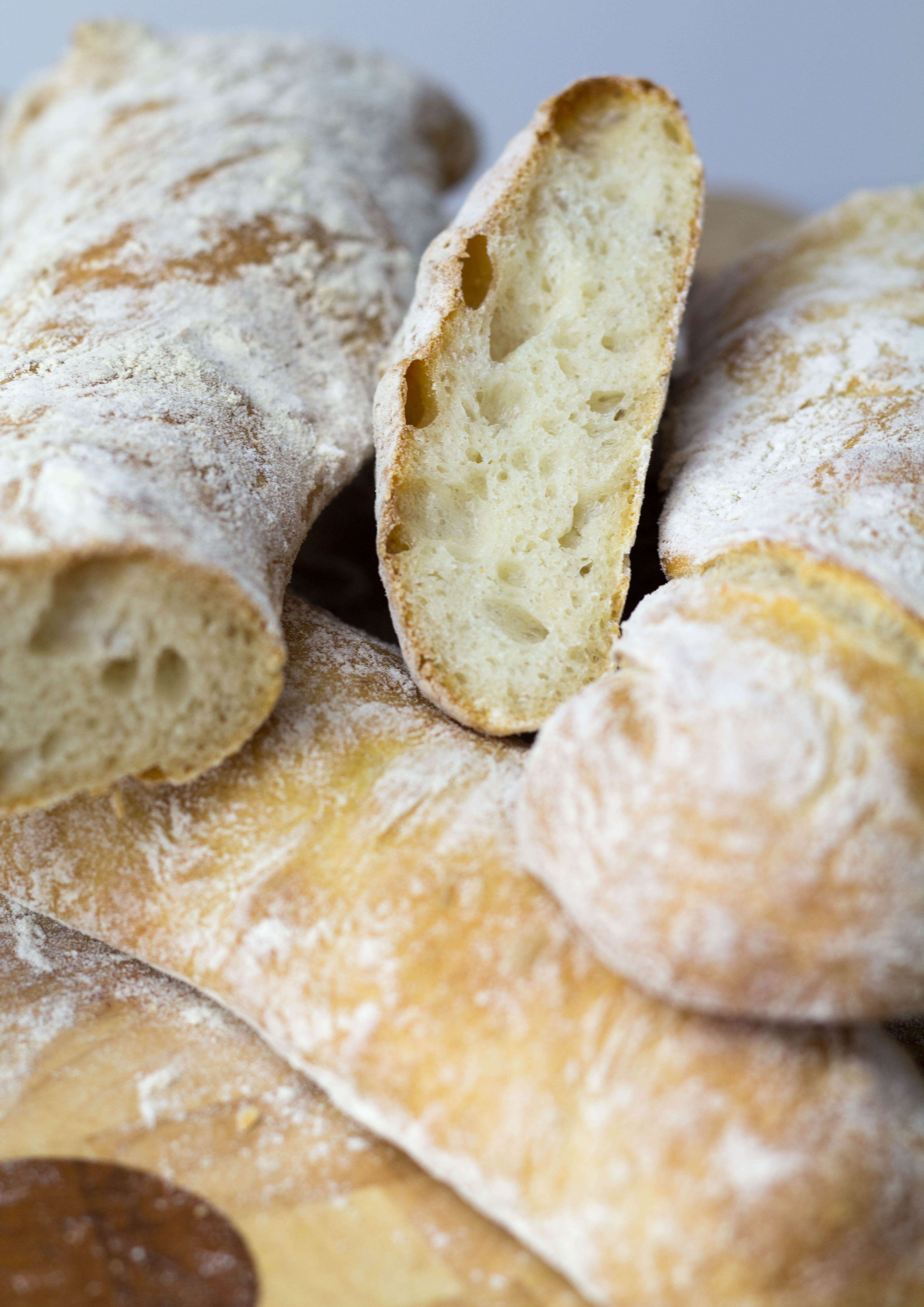
This year my bread skills have improved greatly. My latest favorite bread being the “slipper”, the Italian retort to the French baguette. The fantastic ciabatta, a versatile light and open textured loaf.
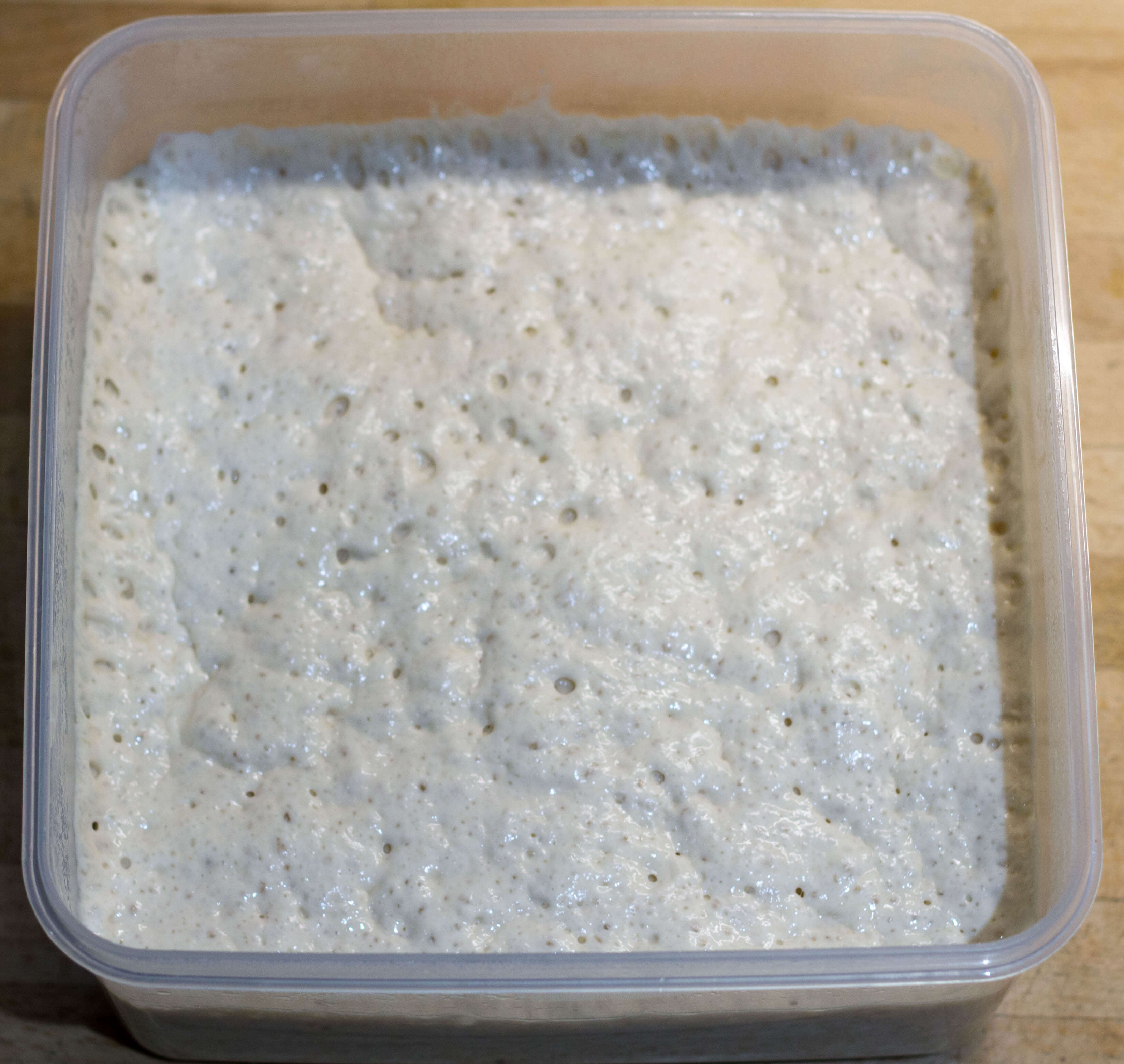
The dough is the polar opposite of the dense dry dough’s of old. The Ciabatta dough is very wet and loose. You really need a stand mixer to knead the dough to build up the gluten. Then you prove it in a square Tupperware box for a couple of hours before carefully transferring the dough to a heavily floured work surface. Cut into loaf shapes and quickly transfer them to baking sheets before the dough try’s to ooze off the workbench.
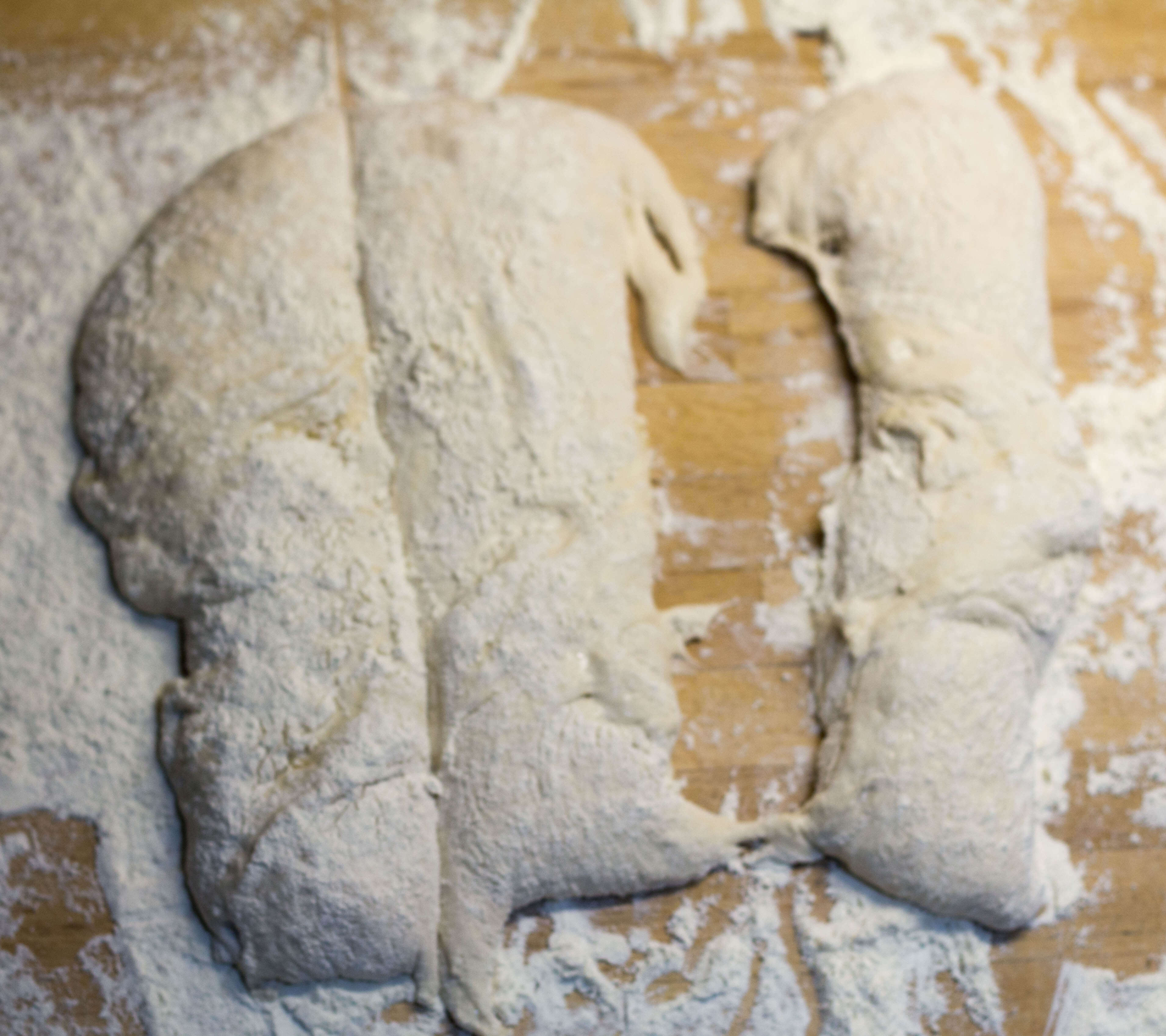
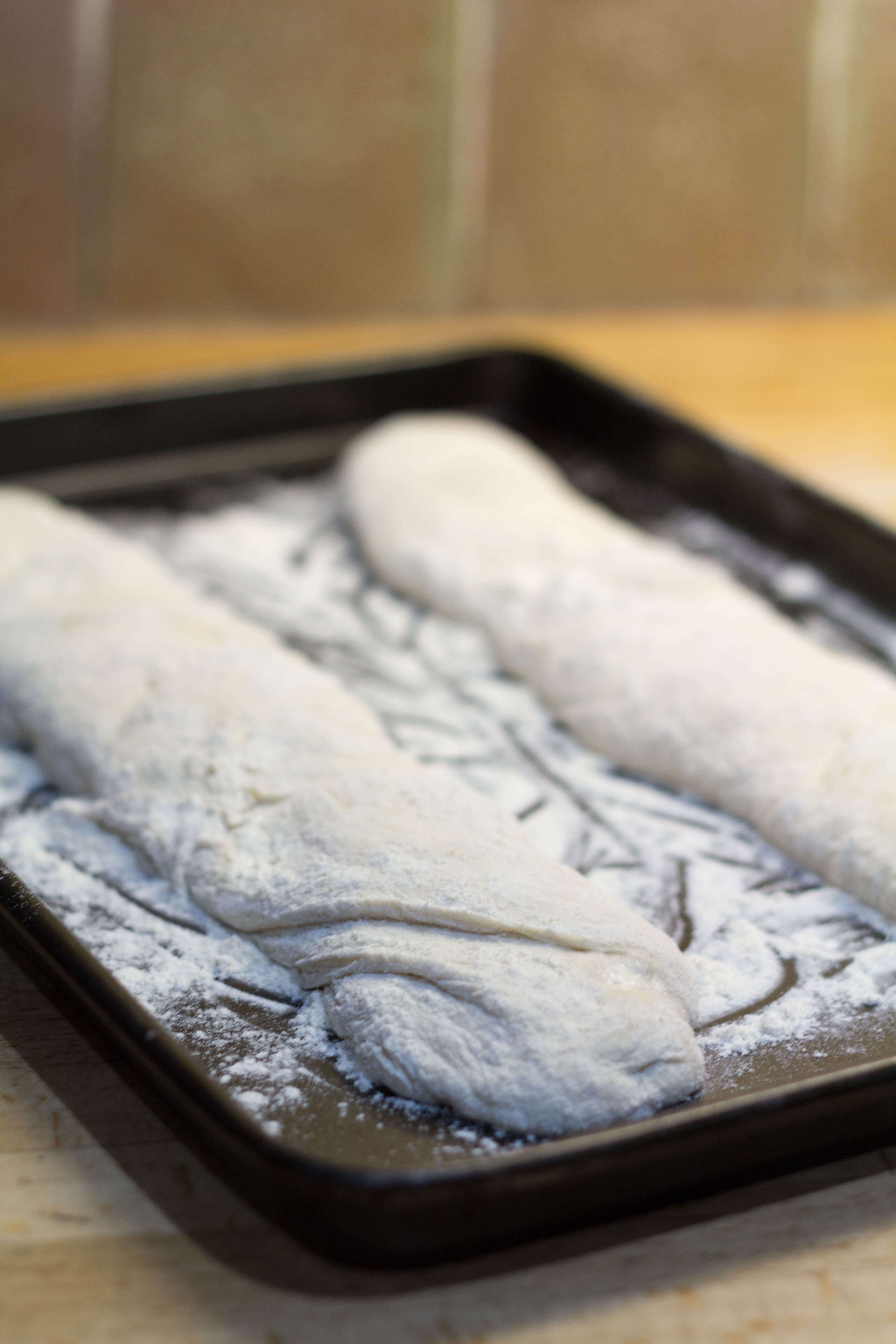
Makes: 4 loafs
Oven Temp: Gas 7, 425F, 220C (200C Fan)
Ingredients
500g strong white bread flour, plus extra for dusting
10g salt
10g instant yeast
3 tablespoons olive oil
400 ml lukewarm water
Instructions
1. Oil a 2 litre square plastic container.
2. Sift flour into a large bowl or the bowl of a stand mixer with the dough hook attached.
3. Add the yeast to one side of the bowl. Add the salt to the other side of the bowl. This helps stop the yeast being retarded by the salt.
4. Add the olive oil and water and begin mixing on a slow speed. As the dough starts to come together, turn the speed up to medium and mix for a further 5-8 minutes until the dough is smooth and elastic.
5. Tip the dough into the oiled container, cover with some plastic wrap and leave until at least doubled in size – a couple of hours.
6. Preheat the oven to 220°C and flour 2 baking trays.
7. Generously dust the work surface heavily with flour. Gently tip out the dough (it will be very wet), trying to keep a rough square shape. Handle it gently so you do not knock much air out of the dough. Dust the top of the dough with more flour.
8. Cut the dough in half lengthwise and divide each half lengthwise again. Place on prepared baking trays.
9. Leave the ciabatta dough to rest for 10 minutes, then bake for 25 minutes, until the loaves are golden brown and sound hollow when tapped underneath. Cool on a wire rack.
- 500g strong white bread flour, plus extra for dusting
- 10g salt
- 10g instant yeast
- 3 tablespoons olive oil
- 400 ml lukewarm water
- Oil a 2 litre square plastic container.
- Sift flour into a large bowl or the bowl of a stand mixer with the dough hook attached.
- Add the yeast to one side of the bowl. Add the salt to the other side of the bowl. This helps stop the yeast being retarded by the salt.
- Add the olive oil and water and begin mixing on a slow speed. As the dough starts to come together, turn the speed up to medium and mix for a further 5-8 minutes until the dough is smooth and elastic.
- Tip the dough into the oiled container, cover with some plastic wrap and leave until at least doubled in size – a couple of hours.
- Preheat the oven to 220 C (200 C fan) and flour 2 baking trays.
- Generously dust the work surface heavily with flour. Gently tip out the dough (it will be very wet), trying to keep a rough square shape. Handle it gently so you do not knock much air out of the dough. Dust the top of the dough with more flour.
- Cut the dough in half lengthwise and divide each half lengthwise again. Place on prepared baking trays.
- Leave the ciabatta dough to rest for 10 minutes, then bake for 25 minutes, until the loaves are golden brown and sound hollow when tapped underneath. Cool on a wire rack.
0
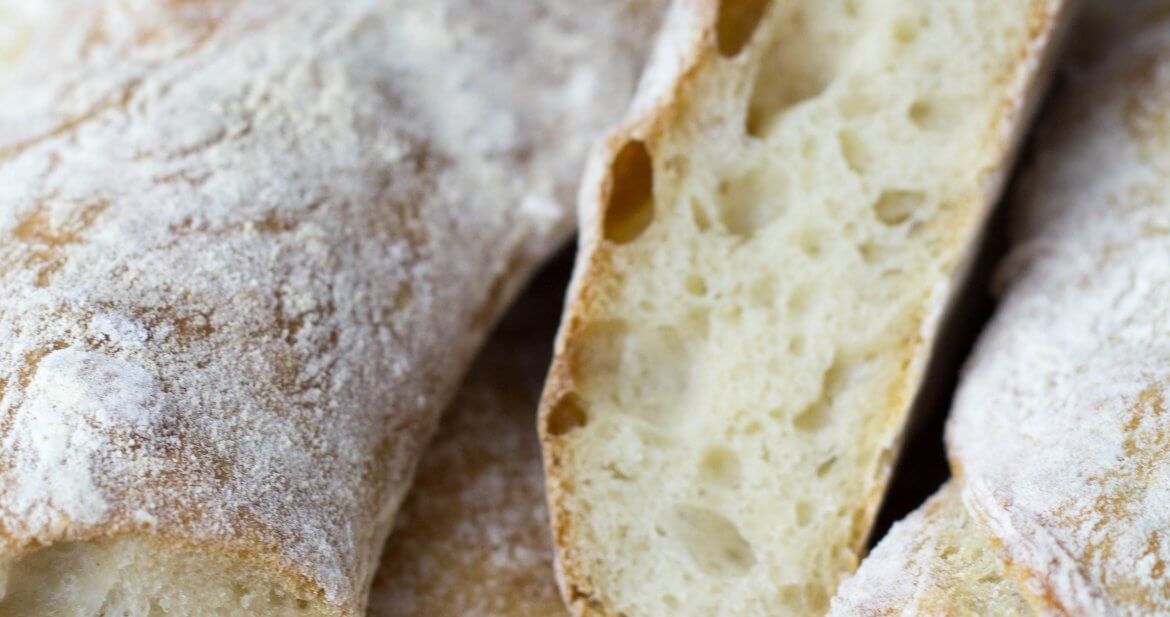
My go-to recipe! Thanks so much. I beat it by hand and it comes out perfect every time. Makes plenty so do share or freeze.